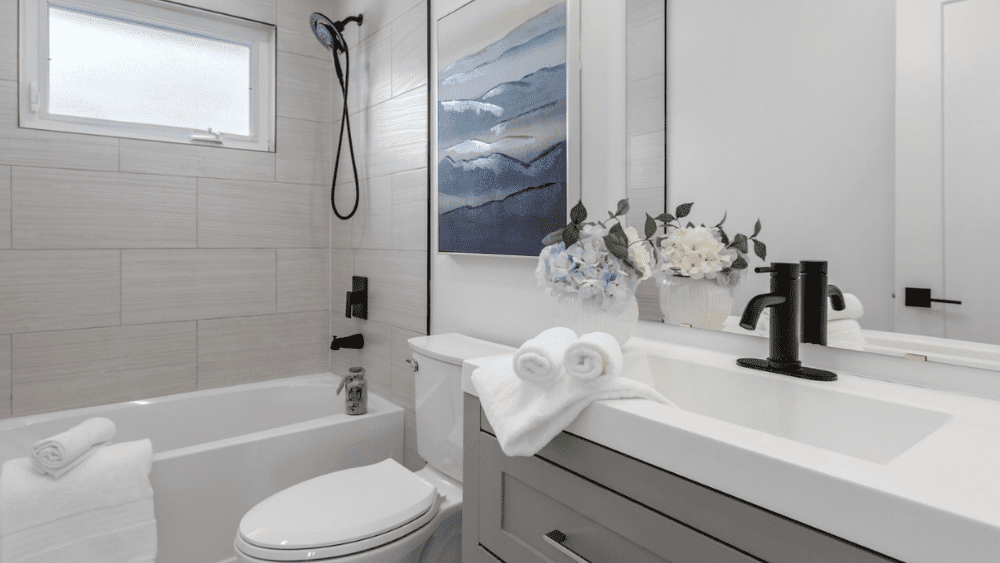
Dual flush toilets vs traditional models: Which is Right for You?
Share
As tech professionals and enthusiasts, we constantly seek out innovations that not only enhance our lives but also promote sustainability. One area ripe for such innovation is the realm of bathroom fixtures, where dual flush toilets have emerged as a compelling alternative to traditional models. At first glance, the difference between these two types of toilets might seem minor, but the implications on water conservation and efficiency are significant.
The debate around dual flush toilets vs traditional models isn't just about aesthetics or personal preference. It's about understanding the technological advancements in water usage and determining which system aligns with our environmental goals and daily needs.

Understanding Dual Flush Technology
The dual flush toilet is a revolutionary concept designed to offer two flushing options: a full flush for solid waste and a reduced flush for liquid waste. This adaptability allows users to conserve water significantly. On average, these toilets use 0.8 gallons per flush for liquids and 1.6 gallons for solids. This dual mechanism not only saves water but also contributes to lower water bills, making it a popular choice among environmentally conscious consumers.
Traditional Models: A Legacy of Simplicity
Traditional toilets, on the other hand, offer a single flush option, typically using around 1.6 gallons per flush. While they may lack the advanced features of dual flush systems, they are known for their reliability and ease of use. For many, the simplicity of traditional models is appealing. However, with growing concerns over water conservation, these models are often seen as less environmentally friendly.
Why Tech Enthusiasts Should Care
For those in the tech industry, the adoption of dual flush toilets represents a move towards smarter, more efficient home systems. These toilets are often equipped with sensors and smart technology that adjust water usage based on the flush type, providing a sneak peek into the potential future of smart bathrooms. This integration of technology not only optimizes water use but also offers a more personalized user experience.
Moreover, as we strive to reduce our carbon footprint, the role of dual flush toilets becomes even more critical. They serve as a practical example of how technology can be leveraged to address environmental issues.
Installation and Maintenance Considerations
When considering the switch from a traditional model to a dual flush system, installation and maintenance are key factors. Dual flush toilets generally require a more complex installation process due to their advanced mechanisms. However, their maintenance is typically straightforward, with many parts readily available in the market.
It's important to note that while the initial cost of dual flush toilets can be higher, the long-term savings on water bills often offset this expense. Furthermore, many regions offer rebates or incentives for installing water-efficient systems, adding to the financial appeal of dual flush toilets.
Environmental Impact and Sustainability
The environmental benefits of dual flush toilets are undeniable. By significantly reducing water usage, these systems play a critical role in water conservation efforts. For tech professionals committed to sustainability, adopting such technologies aligns with broader environmental goals.
According to the EPA, if every household in the U.S. replaced their older toilets with dual flush models, over 520 billion gallons of water could be saved annually. This staggering statistic highlights the impact that a seemingly small technological upgrade can have on a global scale.
Conclusion
The choice between dual flush toilets vs traditional models ultimately comes down to personal preference, budget, and environmental considerations. For those in the tech industry, the decision is clear: dual flush toilets offer a modern, efficient, and sustainable solution that aligns with the values of innovation and responsibility.
As we continue to explore new ways to integrate technology into our daily lives, the shift towards more sustainable living becomes increasingly important. Dual flush toilets are just one example of how technology can drive positive change, making them a worthwhile investment for any tech enthusiast looking to make a difference.

Frequently Asked Questions
What are the cost implications of installing a dual flush toilet?
While the initial cost of dual flush toilets can be higher than traditional models, the long-term savings on water bills often justify the investment. Additionally, many regions offer rebates for installing water-efficient systems.
How do dual flush toilets contribute to sustainability?
Dual flush toilets significantly reduce water usage by offering two flush options. This reduction in water consumption helps conserve water resources and reduce the overall environmental impact.
Are dual flush toilets compatible with smart home systems?
Yes, many modern dual flush toilets can be integrated with smart home systems, providing features like sensor-based flushing and water usage monitoring, making them an excellent choice for tech-savvy homeowners.
This article contains affiliate links. We may earn a commission at no extra cost to you.
